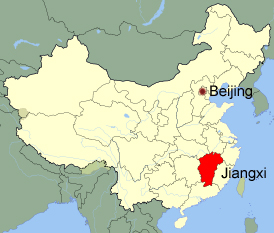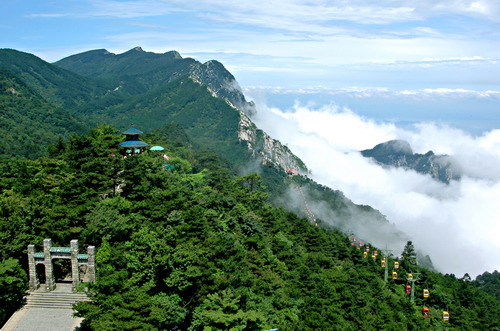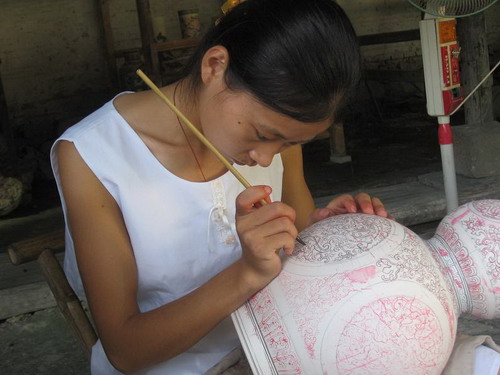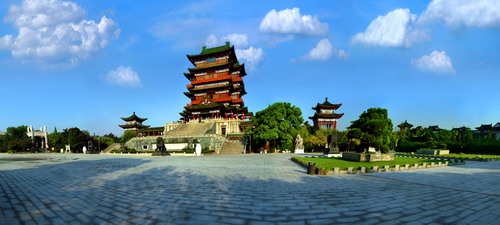Lofty Lushan Mountain
Temples in Hidden Places
On the First of August
Wheels by the Water
Share your travel story with regional@chinadaily.com.cn
General introduction to Jiangxi province
( travelchinaguide.com, Wikipedia, english.jiangxi.gov.cn )
Updated: 2011-08-17

Jiangxi province is situated in the middle and lower reaches of the Yangtze River. It borders Zhejiang and Fujian provinces to the east, Guangdong to the south, Hunan to the west, and Hubei and Anhui to the north. It covers an area of 1,669,000 square kilometers (644,440 square miles) with a population of about 40 million.
Mountains surround Jiangxi province on three sides. The southern half of the province is hilly with ranges and valleys interspersed; while the northern half is flatter and lower in altitude. The highest point in Jiangxi is Huanggang Mountain in the Wuyi Mountains, on the border with Fujian province. It has an altitude of 2,157 meters.
The Gan River dominates the province, flowing through the entire length of the province from south to north. It enters Poyang Lake, the largest freshwater lake of China, in the north.
Nanchang, the region's capital and the most densely populated city, is one of China's largest metropolises. It’s the hub of Jiangxi civilization throughout its history, which plays a leading role in the commercial, intellectual and industrial and political fields. Ganzhou city is the largest subdivision of Jiangxi province.
Climate: Jiangxi has a warm and humid climate with cold springs and winters, hot summers and dry autumns thus accounting for its four distinct seasons. Annual rainfall averages 1,400-1,800 millimeters and the average temperature of the province is 3-9℃ in January and 27-31℃ in July.
Brief history: The name "Jiangxi" derives from the circuit administrated under the Tang Dynasty in AD 733, Jiangnan Xidao. Circuits were established during the Tang Dynasty as a new top-level administrative division. Because the Gan River runs through this province from north to south, it is also called Gan for short.
The history of Jiangxi stretches from Lower Paleolithic times to the present, as Jiangxi was already inhabited by humans one million years ago. The first recorded people inhabited in Jiangxi are Baiyue and their influence is still found in nowadays Gan language.
Centered on the Gan River valley, Jiangxi provides the main transport route from the North China Plain and the Yangzi River valley to the territory of modern Guangdong province. As a result, Jiangxi has been strategically important throughout much of its history.
Tourism: If you are a traveler looking for a place that will give you a variety of interesting options, then Jiangxi province in southern China is definitely the place for you! The pristine beauty of its misty mountains and fresh water lakes will enchant you. Its modern as well as ancient Chinese historical sites will whet your appetite for learning about its culture.
Jiangxi province is a showcase for natural beauty. Tourists will find it hard to leave its beautiful mountains, lakes and rivers. Particularly attractive is Poyang Lake, which is not only the biggest fresh water lake in China, but also the largest winter habitat for white cranes. When winter approaches, about 2,800 white cranes will migrate to Poyang Lake to spend their winter. What a spectacular sight!
 |
|
Poyang Lake is the biggest fresh water lake in China and the largest winter habitat for white cranes. |
On the east side of Poyang Lake is Lushan Mountain, a wonderful summer resort with its lush mountains, enveloping clouds and mists, rapid streams and numerous deep pools and waterfalls. Mysterious and enchanting sceneries nestle in its secluded valleys and deep ravines. Su Dongpo, a well-known poet of the Song Dynasty (960-1279), in honor of the 'Cloud Sea' of Lushan Mountain for its ever-changing mist, wrote, 'the failure to get a real perspective of the mountain only results in the fact that you are right in the midst of it'. The Lushan National Park has been a UNESCO World Heritage Site since 1996.
 |
| The Hanpo Valley on Lushan Mountain in Jiujiang city |
Another mountain -- Jinggang Mountain enjoys a dual reputation. It is more widely known as the cradle of the Chinese revolution rather than for its natural beauty, which is, in fact, comparable to the more famous Lushan Mountain.
The historical sites of Jiangxi province also attract guests from all corners of the world.
To top it off, 'China's Capital of Porcelain'—Jingdezhen—is located here, thus satisfying the shopper in us all. Ceramics were produced here as early as 1,800 years ago in the Eastern Han Dynasty. Today, Jingdezhen remains a national center for porcelain production. While in this ancient town, tourists can visit many pottery factories and ancient kiln sites. They can also handmake porcelains themselves.
 |
|
Jingdezhen is deemded 'China's Capital of Porcelain'. While in this ancient town, tourists can visit many pottery factories and ancient kiln sites. They can also handmake porcelains themselves. |
Tengwang Pavilion is located just west of the provincial capital Nanchang and is one of the three famous pavilions south of the Yangtze River. This pavilion gained its reputation to a great extent because of a well-known poem called 'Preface to Tengwang Pavilion' by Wang Bo, a reputable poet of the Tang Dynasty.
Donglin Monastery is located at the foot of Lushan Mountain. It was built in 386 BC for the monk Hui Yuan (334-416), founder of the Pure Land sect of Buddhism. Hui Yuan spent many years translating Buddhist scriptures in this temple.
In addition, Jiangxi is one of the ancient tea-producing areas in China. The Black Tea produced in Ningzhou city and the Green Tea produced in Wuyuan city are well-known throughout China.
 |
| Tengwang Pavilion west of the provincial capital Nanchang |




